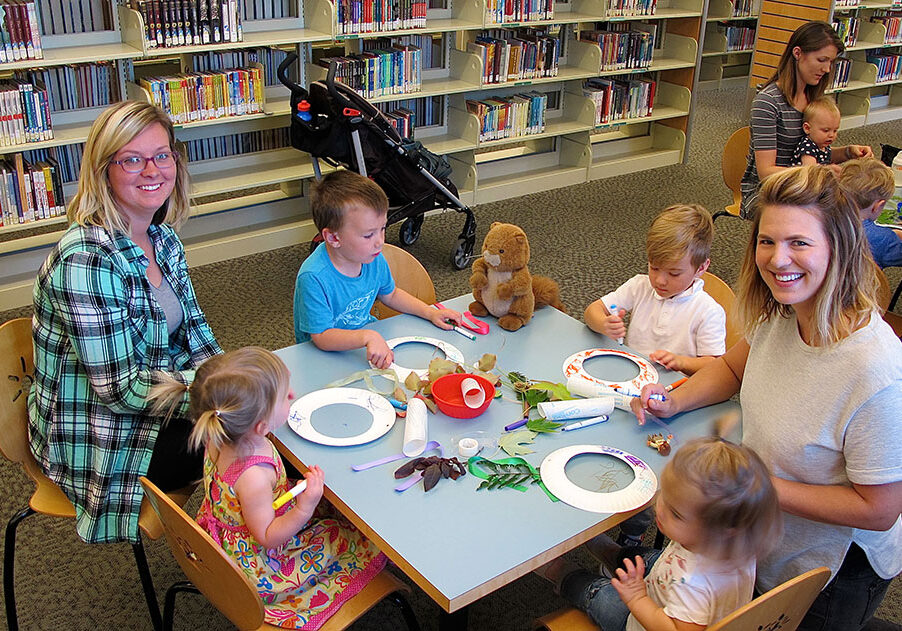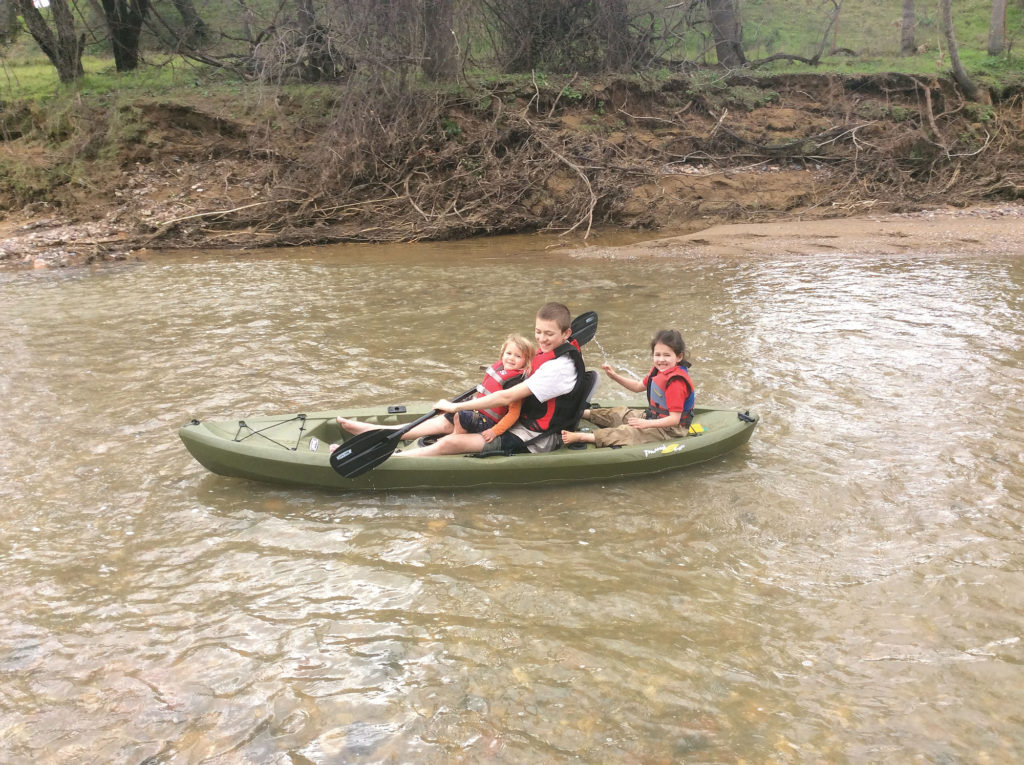Zach Whitten’s day-to-day operations at Whittenberg Country School look like a scene from Louisa May Alcott’s Jo’s Boys. Every school morning is awash with an exciting spectrum of possibilities for students’ imaginations and minds against a broad landscape for physical exploration. Simply put, a typical school day includes frequently releasing pent-up energy outside with play and chores before being welcomed back to a class filled with knowledge and discovery. Then repeat.
Repeating and reinforcing traditions
Repeating and reinforcing traditions and experience is a major part of Zach’s vision for his school — combining the best of traditional school with a homeschool feel. Zach and his wife, Hannah, started Whittenberg Country School in 2011 at the Sacramento River Discovery Center where Zach was teaching science-based summer camps. In 2012 they moved the school out into the country on the south portion of the Whitten family’s Reeds Creek property. Recently Zach has been teaching class in a temporary building north of the creek as they prepare to break ground on a new school building this summer.
The new building will be the culmination of Zach’s dream to be in a one room schoolhouse that looks very similar to the neighboring old Reeds Creek school building. In the 1860s, Reeds Creek children did their book learning in the schoolhouse and then often came onto what is now the Whittens’ property to play baseball and do other activities that required more space. Zach’s family acquired that fun zone and around 130 acres altogether in 1919.
Fall opening for the new schoolhouse
Zach hopes his new schoolhouse will open its doors in the fall complete with a hip roof, covered porch and a central 36×36 schoolroom with floor to ceiling bookshelves. The shelves will eventually house a library of 10,000 books and also the “classroom museum” which includes, among other educational exhibits, artifacts the children are finding around the property. One year a student found the rim of a wagon wheel embedded near the creek, bringing to life their studies on the pioneer days.
Zach knows the value of visual aides for the children’s curiosity and creativity. “Our shelves will function much like our school fruit orchard,” he says. “If the kids can see the fruit in the orchard, and even take part in the planting and nurturing of the trees, they are more likely to want to pick and eat a variety of fruit. When the books, projects and models are on display all around them, the students are more likely to take an interest and taste and see a variety of educational genres.”
Hands-on, active learning with outdoor projects
Apart from the “ABCs and 123s,” as Zach puts it, the students experience hands-on, active learning through large outdoor projects. Each younger student has a 5’x5’ garden bed and older students tend 20’x32’ or larger plots. Students plan and organize their own beds and then enjoy the fruits of their labor. This is also an area where families can participate in Zach’s work share program, which helps with tuition.
Outdoor activities at Whittenberg truly set Whittenberg apart from other schools, and biking has long been a big focus. A biking trail will soon be built on the perimeter of the main 4.5 acre campus. All students learn biking safety and build endurance during the school year in anticipation of the last day of school when students, teachers and some parents hit the nearby country roads for either a 13 or 19 mile ride. Every fall, the school hosts a community biking event, “The Pumpkinhead Family Bike Ride.”
The freedom of being a private school
As a private school, Whittenberg isn’t limited by an outside governing umbrella. The annual Almond Blossom Ball fundraiser helps keep art and music budgets healthy, and an outdoor stage for the drama program will be added soon. Currently, the students are preparing for their end of the school year “Wizard of Oz” performance. Cycling through four different dramas over the years is part of Zach’s belief that concepts and experiences are richer when repeated as we age: “The better we learn something the more we enjoy, and expand on, that experience later.”
Students also enjoy swimming, archery, horseback riding, roller skating and monthly educational trips. Their recent May Day celebration was a beautiful example of Zach’s belief in repeating traditions. Going “a-Maying,” when students pick flowers and weave May Day baskets to lavish on others is one of the students’ most popular traditions. While the younger students are first learning how to weave the baskets, the more experienced students are now able to create individualized, elaborate weaves. A precious memory is when Isaiah, Zach and Hannah’s oldest son, surprised an 80 year old neighbor with a basket. That neighbor said she had been waiting nearly her whole life for an admirer to leave a May Day basket at her door.
 A small school and large family
A small school and large family
Zach’s school accommodates around 20 children; most in K-8 with some high schoolers staying on and adding community college courses to their schedule. Zach’s seven children are also students at the school.“People often wonder how we can handle such a large family,” he says. “It’s a funny thing, but when all the extra students and adults leave after a school day, our family feels quite small.”
It sounds like a dream, doesn’t it? Going off on a school day to “Squirrel Forest” to have a campfire and read Robert Frost poems. Dreaming up future rope courses and log teeter totters among the cottonwoods, oak and walnut trees. Whittenberg Country School is most definitely taking Frost’s road “less traveled by, and that has made all the difference.”
See our summer camp section to learn about Whittenberg Country School’s summer camp offerings or visit the school’s website for more information http://www.whittenbergcountryschool.org.
Posted in: Education, This is Tehama
Comment Policy: All viewpoints are welcome, but comments should remain relevant. Personal attacks, profanity, and aggressive behavior are not allowed. No spam, advertising, or promoting of products/services. Please, only use your real name and limit the amount of links submitted in your comment.
You Might Also Like...

Your Local Library is a Hub of Activity
If a library isn’t your idea of the “happening place” in town, it’s time to walk back through the doors of your local branch. Gayle Harrington, Cottonwood’s director of library […]

A Gateway to Health Care: Glenn County Medical Assistant Program Is a Game-Changer
Health care careers are more than jobs—they’re opportunities to make a difference. As health care continues to be a cornerstone of our communities, the need for skilled professionals is more […]

Keeping Your Child’s Love For Writing (Not Texting!) Alive
Glanced at your child’s text messages lately? No? How about her e-mails or online chats? If you take a peek, you’ll find plenty of sentence fragments, emoticons and shortcuts like […]

Teaching Children Tolerance and Celebrating Diversity
According to the latest FBI data, there were 5,818 single-bias hate crimes committed for the year 2015 alone. Of concern to parents, according to various agencies, young men under 26 […]







